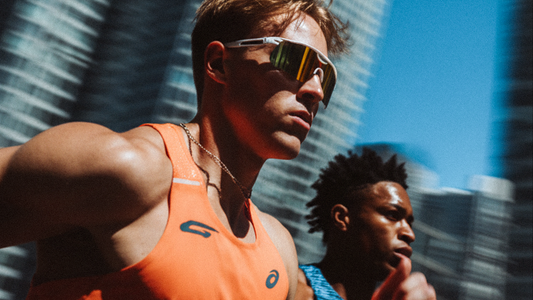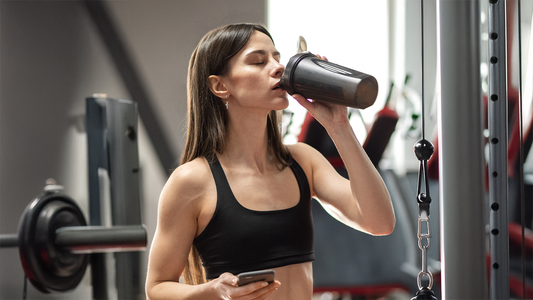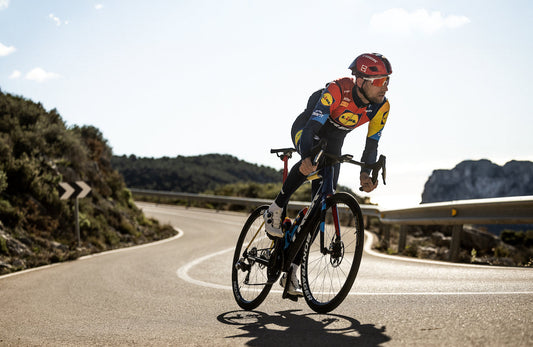Introduction
Triathlon isn't just about training, it's about fueling. Even the most prepared athletes can hit a wall, or "bonk," if their nutrition strategy isn't dialed in. This complete guide will teach you how to fuel your first triathlon, covering everything from what to eat days before the race to your race-day nutrition plan and crucial post-race recovery. Let's ensure you cross that finish line feeling strong, not spent.
1. The "Fourth Discipline": Why Triathlon Nutrition is Non-Negotiable
Triathlons combine swimming, cycling, and running — three demanding disciplines that deplete glycogen stores, increase fluid loss, and put your digestive system under stress. Proper nutrition ensures:
-
Sustained energy through each leg.
-
Hydration balance to avoid cramps or overheating.
-
Faster recovery post-race.
Think of nutrition as your “fourth discipline.”
2. Race Week Fueling: The Pre-Race Carb-Loading Strategy
What you eat in the days leading up to your race is just as important as your training. Your goal is to top off your glycogen stores without causing digestive distress. Here's how to do it right:
-
Carb-Load Smartly: Increase your carbohydrate intake to around 6-8g per kg of body weight per day. Focus on easily digestible carbs like pasta, rice, oatmeal, and sweet potatoes.
-
Hydrate Consistently: Sip water throughout the day and include a steady supply of electrolytes. A simple check? Aim for urine that's a pale yellow color.
-
Stick to What You Know: Avoid trying any new or high-fiber foods that could upset your stomach on race day. Your training is a time to experiment, not the race itself!
3. Race Morning Fuel: Your Pre-Race Checklist
This is your final fueling opportunity. Your race-morning breakfast should be consumed 2-3 hours before the start and consist of:
-
Simple Carbs: Choose easily digestible carbs like a bagel with jam, a bowl of oatmeal with a banana, or a couple of rice cakes.
-
A Touch of Protein: Add a small amount of protein (like yogurt or a whey shake) to help with satiety and muscle readiness.
-
Fluid and Electrolytes: Continue to hydrate with water, and consider adding an electrolyte mix to your bottle.
4. Fueling On the Go: Your In-Race Nutrition Strategy
This is where your fueling plan comes to life. Your strategy depends on the race distance and your personal needs. Remember to **always test your race fueling in training** to train your gut.
Sprint Distance (1–1.5 hours)
-
For this short, fast race, water and electrolytes are often sufficient. If you feel your energy dipping, one energy gel or chew on the bike is usually enough.
Olympic Distance (2–3 hours)
-
This is where carbs become key. Aim for 30-60g of carbs per hour. Your strategy could be one energy gel every 30-40 minutes along with an electrolyte drink.
Half-Ironman (4–6 hours)
-
Your hourly carb target should increase to 60-80g. Mix your sources to avoid flavor fatigue: a combination of gels, carb drink mix, and energy chews works best. Aim to consume 500-750ml of fluid per hour, depending on the heat.
Ironman (8+ hours)
-
For this endurance test, push toward 90g of carbs per hour, using a mix of glucose and fructose for better absorption. Rotate between liquid, gels, chews, and small solid foods. Electrolytes are critical, with a target of 500-800mg of sodium per liter.
⚠️ Always test your race fueling in training to train the gut.
5. Post-Race Recovery: The Golden Hour
The work isn't over when you cross the finish line. The "golden hour" after your race is when your body needs immediate replenishment to kickstart recovery and reduce muscle soreness.
-
Carbs + Protein: Within 30-60 minutes, consume a 3:1 ratio of carbs to protein. A recovery shake, chocolate milk, or even rice with chicken are great options.
-
Fluid & Electrolytes: Continue hydrating by replacing about 150% of the fluids you lost over the next 4-6 hours. Replenishing sodium and potassium is crucial to restoring balance.
6. Rookie Mistakes: Common Fueling Blunders to Avoid
You've got your plan, but make sure you don't fall victim to these common pitfalls:
-
Forgetting to "Gut Train": Your stomach is a muscle. Practice your race-day fueling strategy on long training days so your body knows how to handle the carbs and fluids.
-
Trying Anything New on Race Day: Never try a new food, gel, or drink on race day. Stick to what you've tested and trusted.
-
Overhydrating with Plain Water: Drinking too much plain water without electrolytes can lead to a dangerous condition called hyponatremia. Always balance your water intake with electrolytes.
-
Forgetting to Look Up: Look up from your bike computer and your running watch and enjoy the moment! You've worked hard for this.
Conclusion
Your first triathlon is a monumental achievement, and with the right fueling plan, you'll be ready for every step of the journey. Remember that nutrition is your secret weapon—it's your edge. Now go out there and own it!



